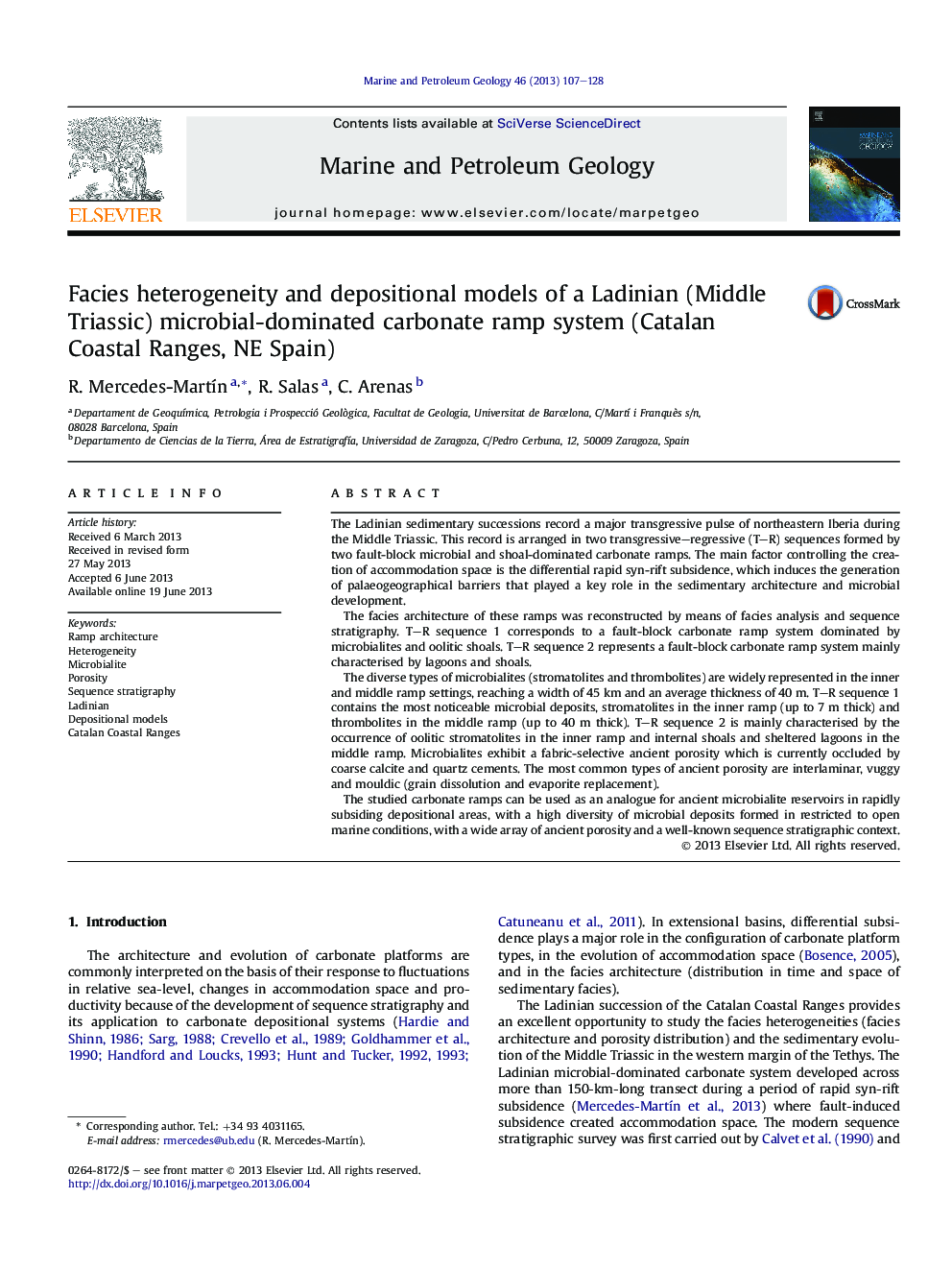| کد مقاله | کد نشریه | سال انتشار | مقاله انگلیسی | نسخه تمام متن |
|---|---|---|---|---|
| 4695711 | 1637178 | 2013 | 22 صفحه PDF | دانلود رایگان |

• We reconstructed the facies architecture and depositional models of the Catalan Basin.
• Two stepped microbial-dominated carbonate ramps were identified.
• A 2D conceptual model of trends of porosities was performed for microbialite facies.
• Microbialites flourished during third-order regressive stages.
• Synsedimentary faults controlled the sedimentary architecture and microbialite types.
The Ladinian sedimentary successions record a major transgressive pulse of northeastern Iberia during the Middle Triassic. This record is arranged in two transgressive–regressive (T–R) sequences formed by two fault-block microbial and shoal-dominated carbonate ramps. The main factor controlling the creation of accommodation space is the differential rapid syn-rift subsidence, which induces the generation of palaeogeographical barriers that played a key role in the sedimentary architecture and microbial development.The facies architecture of these ramps was reconstructed by means of facies analysis and sequence stratigraphy. T–R sequence 1 corresponds to a fault-block carbonate ramp system dominated by microbialites and oolitic shoals. T–R sequence 2 represents a fault-block carbonate ramp system mainly characterised by lagoons and shoals.The diverse types of microbialites (stromatolites and thrombolites) are widely represented in the inner and middle ramp settings, reaching a width of 45 km and an average thickness of 40 m. T–R sequence 1 contains the most noticeable microbial deposits, stromatolites in the inner ramp (up to 7 m thick) and thrombolites in the middle ramp (up to 40 m thick). T–R sequence 2 is mainly characterised by the occurrence of oolitic stromatolites in the inner ramp and internal shoals and sheltered lagoons in the middle ramp. Microbialites exhibit a fabric-selective ancient porosity which is currently occluded by coarse calcite and quartz cements. The most common types of ancient porosity are interlaminar, vuggy and mouldic (grain dissolution and evaporite replacement).The studied carbonate ramps can be used as an analogue for ancient microbialite reservoirs in rapidly subsiding depositional areas, with a high diversity of microbial deposits formed in restricted to open marine conditions, with a wide array of ancient porosity and a well-known sequence stratigraphic context.
Journal: Marine and Petroleum Geology - Volume 46, September 2013, Pages 107–128